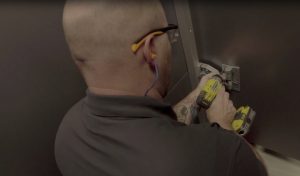For years, scientists have studied the effects of various colors on the human mood, which is known as color psychology. Results have shown that different shades or hues have strikingly different effects, and specific classroom colors are more conducive to learning. Blue, for example, is soothing and calming, while red encourages excitement. So it’s important to consider color choice when decorating your classroom.
In this post, we’ll take a closer look at color psychology, how color can alter the mood of your classroom, and review some best practices that can help you to heighten creativity and improve focus.
Understanding the Effects of Colors
As we mentioned above, each color has a particular effect on mood. Red can create a sense of excitement and increase alertness. It also increases appetite and creativity. However, for individuals who suffer from anxiety, red can also be extremely upsetting. Blue, on the other hand, can suppress appetite, lower temperature, and create a calming environment.
Use the list below to see what effects certain colors can have:
- Yellow: Increases creativity and attention and instills a general feeling of positivity
- Orange: Can improve alertness
- Green: Peaceful and calm
- Purple: Peaceful and calm
- Brown: Can reduce feelings of fatigue and improve feelings of relaxation or make students feel more secure
- Off-White: Improves attention and instills feelings of positivity
- Red: Inspires alertness, excitement and creativity
Adjusting Colors in a Preschool Classroom to Improve Attention, Creativity or Rest
Within a preschool setting, color adjusting the room can help with many activities and tasks when working with young children who need direction, structure or calming. For instance, wearing an off-white shirt can help to improve their attention span, while using splashes of red around the art station can increase creativity and excitement. Meanwhile, quiet areas for naptime should be decorated with shades of green, purple, or blue to promote rest and a sense of peace and calmness within the room.
Inspiring Learning with Youth and Adults
Similar to how color can be used in classrooms for young children and infants, teachers who work with youth and adults can strategically decorate their classrooms to improve attention, creativity, and even feelings of security. If you spend most of your time lecturing and want students to be alert so they can take thorough notes, consider adding orange, off-white, or red to the room.
If your class involves hands-on work where students are asked to create or solve complex problems, then using colors like red or yellow can help to facilitate creativity.
Whatever your lesson plan involves, color can be used to instill learning and improve student performance. Keep in mind what effects colors have on mood in the classroom and plan your classroom decorating all colors and decorating carefully.
Did you know that classroom design can impact students’ attitudes and even the way they retain information?
To learn more, read our article, New Research Shows Positive Connection Between Classroom Design and Learning.
Scranton Products, a leading lockers manufacturer, manufactures low maintenance, aesthetically pleasing and durable lockers for school facilities. Learn more about Duralife school lockers, ideal for elementary, middle school and high school facilities.




 functioning at its best. Look for any components that may need a replacement, so you can take care of it during the break. Any type of issue that can prevent your school from being heated may actually prolong winter break, so be sure to
functioning at its best. Look for any components that may need a replacement, so you can take care of it during the break. Any type of issue that can prevent your school from being heated may actually prolong winter break, so be sure to  The doors and fixed panels used in the Eclipse partition system provide both high design and privacy. Here we show how to ensure proper gapping and consistency on all panels and doors in order to achieve the desired sleek lines.
The doors and fixed panels used in the Eclipse partition system provide both high design and privacy. Here we show how to ensure proper gapping and consistency on all panels and doors in order to achieve the desired sleek lines.